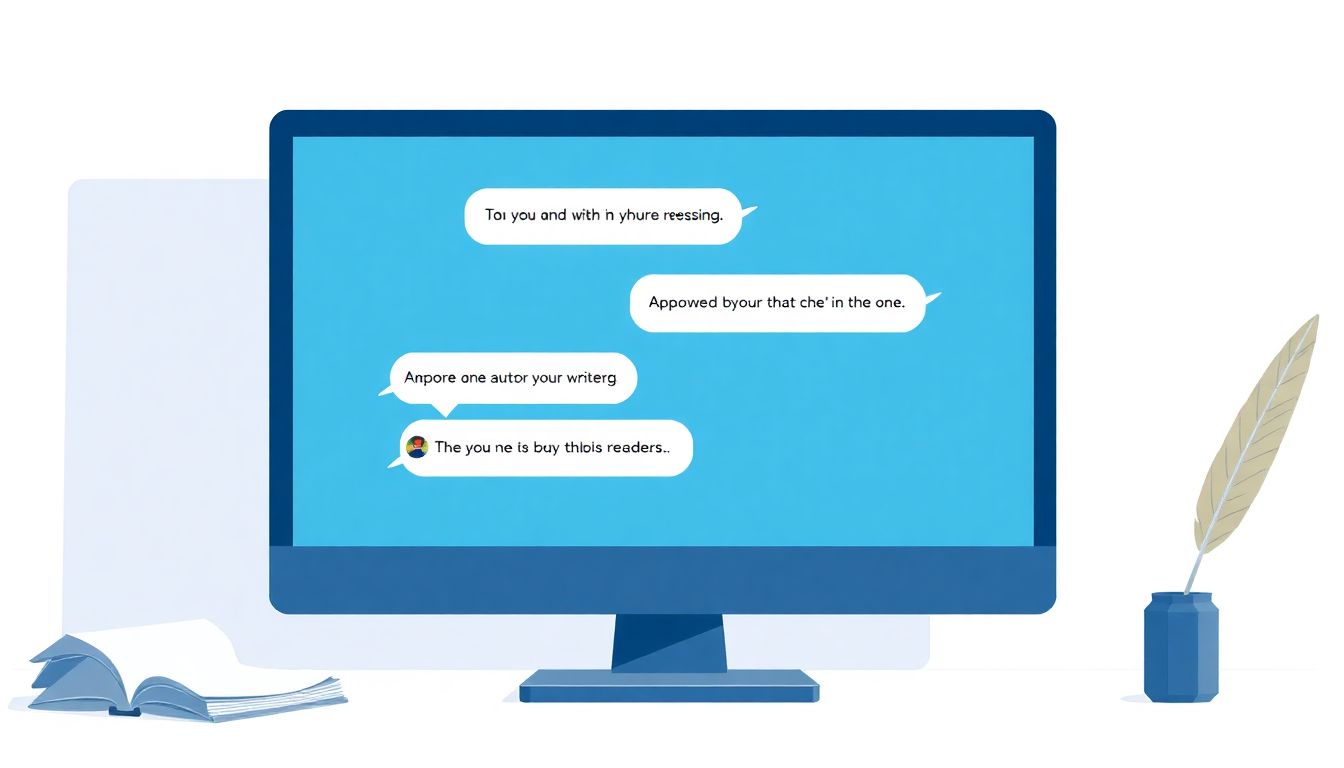Marketing your book can feel like a never-ending task—emails to send, ads to manage, and readers to reach out to—it can be overwhelming. I get it, there’s only one of you and a bazillion things to do.
But what if you could automate a bunch of those little tasks and free up your time (and sanity)? Stick with me, and I’ll show you exactly how to set up systems that handle the busywork while you relax and watch those sales roll in.
Ready to make book marketing easier and smarter? Let’s jump into exactly how it’s done.
Key Takeaways
- Choose marketing tools that fit your goals (emails, social media, ads) and work smoothly with your existing platforms.
- Automate personalized emails by segmenting readers by interest or past interactions to directly boost engagement and book sales.
- Use reader behavior to automatically suggest relevant books, similar to how Netflix recommends movies.
- Set up chatbots to instantly answer questions and improve interaction without manual effort.
- Create automated Amazon and Google ads with clear messages, smart keyword targeting, and managed budgets for consistent promotion.
- Track results carefully and adjust based on how readers react to improve your sales progressively.
- Establish clear marketing goals from the beginning to stay organized, motivated, and get the most from your automation efforts.

Step 1: Choose the Right Book Marketing Automation Tools
Picking the right automation tools is the first step in making your book marketing process simpler and more effective. But how do you know which tools are best for you?
First, think about your goals. Are you looking to improve email communication, manage social media content, or analyze reader data? There are specialized tools for each, as well as all-in-one platforms like AI-powered marketing tools that can handle multiple tasks simultaneously.
Next, make sure the tool you pick integrates easily with platforms you’re already using, like Amazon Kindle Direct Publishing or your personal website. Easy integration reduces effort and keeps everything running smoothly.
One handy tip: check out real user reviews before settling on any tool. Look out for features like personalized email campaigns, automated follow-ups, chatbot support, and thorough analytics—these can significantly boost your marketing.
And here’s a reassuring piece of data: For every dollar you invest in automation, you could see an average return of $5.44, according to recent stats on boosting book sales on Amazon.
Step 2: Set Up Personalized Email Marketing Campaigns
Personalized emails are your secret weapon when you’re automating book marketing. They create a direct connection with your readers, helping you sell more without feeling pushy.
To get started, segment your email list. Break your audience into groups based on their reading preferences, location, or how they’ve interacted with your past emails. This allows you to tailor your messages specifically to their interests.
Use automation software like Mailchimp or ConvertKit to set up email flows. A good automated sequence could look something like this:
- A welcome email introducing yourself and your books.
- A week later, a helpful email offering a behind-the-scenes look at your writing process.
- A promotional email about upcoming releases or special discounts.
Keep it casual, friendly, and conversational, like you’re chatting with a good friend who’s interested in the same genres as you are.
Remember this: 77% of marketers leverage AI-powered automation for content personalization, so if you’re not automating personalized campaigns yet, you’re likely missing out!
Step 3: Create Custom Book Suggestions for Your Audience
You know when Netflix recommends that perfect show after you’ve binged another? That’s essentially what you want to achieve with customized book suggestions—offering readers options they’ll actually be excited to pick up.
You can achieve this by using automation tools like ActiveCampaign or HubSpot, which track what your readers interact with and then offer recommendations based on those interactions.
Here’s a simple approach you can follow:
- Create a mapping of your books based on themes, genres, or series.
- Tag each book in your email automation software according to the categories or themes.
- Set up your software to automatically send personalized recommendations to readers based on the previous books they’ve enjoyed or downloaded.
Automated custom suggestions make your readers feel valued, increasing both retention and sales in the long run.
With nearly 40% of marketers now automating entire customer journeys, recommending books in this personalized way can give you an advantage, making readers feel special and driving your sales up.

Step 4: Use Automated Chatbots to Communicate With Readers
Wondering how you can stay in touch with readers without spending all day responding manually? Let automated chatbots do the heavy lifting for you.
Chatbots help answer common questions readers may have—things like book availability, FAQs about your writing, or even direct links to purchasing your newest release. They’re always available, letting readers get immediate responses and freeing you up to keep writing.
Start with a reliable service like ManyChat or Chatfuel, as these platforms smoothly integrate with social media sites your readers frequent, such as Facebook or Instagram.
Make your chatbot responses sound personal and natural. Think of the type of casual, funny conversations you’d have with your readers at a book signing and replicate that conversational tone.
About 91% of decision-makers say automation requests are rising from their teams, proving it’s something readers both want and expect nowadays. You can keep readers happy without taking time away from the activities you really enjoy—like finally using some of those funny writing prompts you’ve collected.
Step 5: Set Up Automated Advertising on Amazon and Google
If you’ve ever worried about how to consistently attract new readers without overspending, automated advertising on Amazon and Google might be exactly what you need.
Platforms like Amazon Advertising and Google Ads help you set your campaigns on auto-pilot. You create ads based around keywords or genres, set your budget, and let the platforms handle the rest.
Here’s how you can easily set up Amazon or Google automated ads:
- Choose a clear, attractive ad image and straightforward text that instantly speaks to potential readers.
- Select targeting options carefully—utilize keywords closely related to the genre, similar authors, specific book categories, and also target readers who frequently purchase related books.
- Keep a close eye initially so you can update budgets or targeting based on early performance.
- Once stable, the ads largely manage themselves, bringing new readers in on autopilot.
Considering around 80% of marketers using automation platforms say they see increased leads, automated ads absolutely can boost your reader base without much ongoing effort on your part.
Step 6: Measure Results and Adjust Automation Based on Sales Data
Once your marketing automation is set, you might wonder how to know if everything is working as expected. The answer? Measure your results carefully and adjust your campaigns based on actual sales data.
Each automation platform you use, whether it’s email, chatbots, or advertising, should provide you detailed metrics. Look out for critical numbers like click rates, conversion rates, ad spending versus generated revenue, and email open rates.
Try creating a simple spreadsheet or use a dashboard like Google Data Studio to keep all sales data handy and visualize it. Having data clearly accessible can help you spot trends quicker and make fast adjustments.
In fact, around 44% of companies see ROI from automation within just six months, but you can’t set it and forget it; monitoring is key to success.
If certain email recommendations aren’t leading to clicks, tweak your personalization strategy. Maybe specific ads are costing too much—go ahead and refine your keyword targeting. It’s about continuously testing and refining to find what resonates best with readers.
Step 7: Set Clear, Achievable Marketing Goals to Stay Focused
Automation tools are great, but without clear goals, you’ll never feel fully confident you’re moving in the right direction.
Decide exactly what you want your automation to achieve. Are you after more book reviews, increased sales revenue, better reader engagement, or larger email subscriber lists?
Always remember to set achievable and measurable goals like:
- “Grow email subscriber list by 20% in the next three months.”
- “Generate a 25% increase in monthly book sales using personalized email recommendations within six months.”
- “Increase click-through rates from chatbot communications by 10% by adjusting conversational strategies.”
Good goals should be clear enough to keep you motivated but flexible enough that you aren’t feeling overwhelmed. After all, automation is supposed to make your life easier, not add extra anxiety!
Considering 98% of B2B marketers say automation is crucial for their success, clear goals will define the roadmap that your automation strategy follows, ensuring it’s aligned with your overall vision as an author.
FAQs
Email platforms like Mailchimp or ConvertKit offer easy-to-use automation. Chatbot tools such as ManyChat enhance reader communication. Advertising automation via Amazon Ads and Google Ads simplifies targeting and campaign tracking, boosting visibility and conversions.
Segment your subscriber lists based on reading preferences, previous purchases, or survey responses. Include readers’ names and reference their interests naturally in messages. Set automated triggers to send timely and relevant follow-ups, promotions, or recommendations.
Automated chatbots quickly address common reader questions, help visitors find ideal books, and guide readers through purchase processes. They significantly improve response times, sustain engagement, and reduce repetitive manual tasks, allowing authors to focus on writing.
Authors should regularly track sales numbers, outreach effectiveness, ad performance, and reader engagement metrics. Monitoring open rates, click-through rates, conversions, and feedback helps pinpoint which elements of automation work and where adjustments are required.
